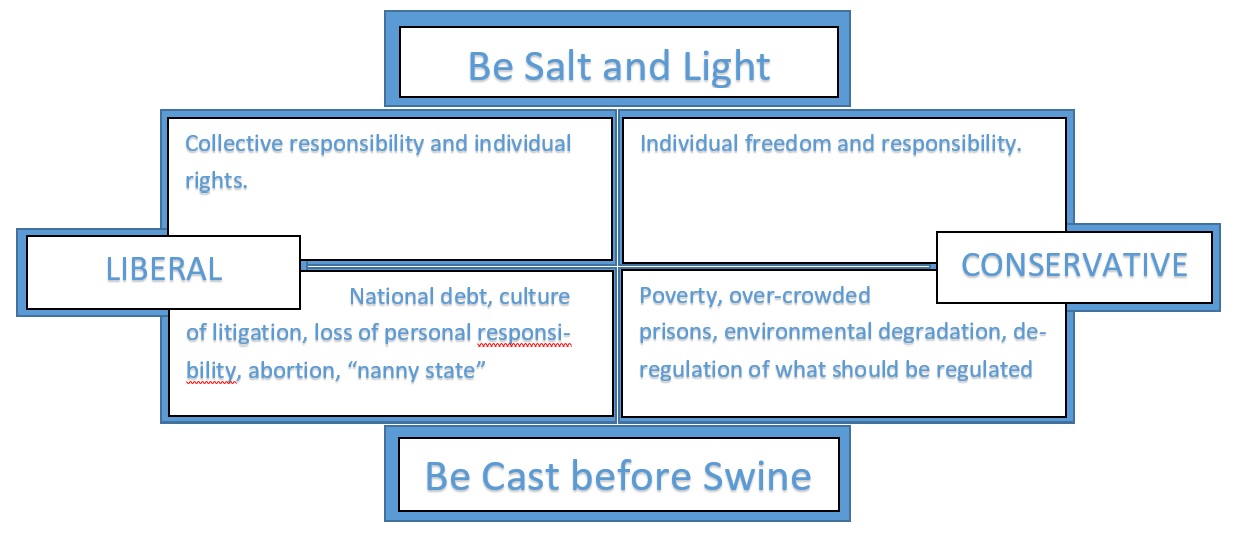Lately, I’ve been having a lot conversations about baptism.
Some of these have been with credobaptists who wonder about the scriptural justification for infant baptism. Some with those who were baptized as infants, but now attend a church that holds to believer baptism, and are required to be re-baptized in order to be a member.
This post is my explanation, to those who wonder, why some Christians insist that infant baptism is baptism.
This is a difficult task because, in the case of most protestant denominations who practice it, infant baptism has everything to do with Covenant Theology. This is more of a worldview, than an interpretation of scripture, so to actually understand infant baptism, you really need to be looking through the lenses of Covenant Theology.
I have no problem with believer baptism (credobaptism). No paedobaptist (infant baptizer) does; it is clear that the church in Acts baptized adults. Christians are called to be baptized. When an unbaptized person becomes a believer, they will then be baptized. Baptism is an important issue, but it is not, as they say, a “Salvation issue.”
I believe that there is adequate historical and scriptural evidence that infant baptism was normative in the early church. I also think that baptism of infants is, today, a counter-cultural practice to which all Christians might consider returning.
Historical Evidence for Infant Baptism
The historical evidence points to infant baptism being practiced in the early church. Augustine of Hippo (354–430) speaks to the universality of infant baptism saying it is “held by the whole church, not instituted by councils, but always retained.” There is only a century separating John the Apostle and the Church Father Origin, who was certainly baptized as an infant in around 180 AD.
It is reasonable to assert that the practice of baptism as performed in the earliest days of the church, was imitated in the decades that followed; they did what they saw done. By itself, historical evidence like this is not an adequate reason to accept infant baptism, but it can be used as a support to scriptural evidence.
Scripture ought to be our guideline when trying to determine who to baptize. So the question is, What do the scriptures say?
Scriptural Evidence
Well, this is inconclusive. There can be clarity, but to achieve it, you have to read every verse regarding baptism from a particular perspective. If you read it with one perspective, one can convincingly argue that believer baptism is scriptural; if you read it from another, then infant baptism is the way to go. Proof of this is that both credo- and paedobaptists use exactly the same texts to support their views.
Covenantal Approach
Those who baptize infants start with a covenantal perspective. God deals with his people using Covenants. The mark of the Old Covenant was circumcision, carried out long before a child could make any personal response to God. Abraham circumcised Isaac at eight days old (Genesis 21:4). Babies born into a believing home receive this sign of the covenant, and it is clear that the faith of the parents is sufficient for the whole household, including the children. Clearly, children were a part of the Old Testament people of God.
Circumcision was a sign–it pointed to something else–a transformation of the heart. In Deuteronomy 10:16 this is referred to as the “circumcision” of the heart. We also find this language in Jeremiah (4:4). In Ezekiel 36:24-27 it’s called a new heart, a heart of flesh as opposed to one of stone.
Importantly, outward circumcision did not guarantee the inward transformation. In Jeremiah 9:25-26 it says, “The days are coming, declares the Lord, when I will punish all who are circumcised only in the flesh–Egypt, Judah, Edom, Ammon, Moab–and all who live in the desert in distant places. For all these nations are really uncircumcised, and even the whole house of Israel is uncircumcised in heart.” The sign of circumcision was not simply a sign of belonging to a racial group, or even a particular religion–it was a sign of spiritual transformation. One which the recipient of the sign may or may not experience.
Paul sees circumcision in this way as well. In Romans 2:25-29, especially verses 28-29, he emphasizes that what counts is “circumcision of the heart, by the Spirit.” He then comments on God’s first command to Abraham to circumcise his household: “[Abraham] received the sign of circumcision, a seal of the righteousness that he had by faith while he was still uncircumcised” (Rom 4:11). Paul reinforces the idea that physical circumcision is a sign for spiritual transformation. He also says that Abraham is not only the spiritual father of uncircumcised Gentile believers (4:11b), but also of “the circumcised who not only are circumcised but who also walk in the footsteps of the faith that our father Abraham had before he was circumcised” (4:12).
Here we see that faith precedes the sign of the covenant, but once received, the faith of the adult is sufficient for the whole household, including children.
Parallels Between Circumcision and Baptism
The general pattern of scripture shows important parallels between circumcision and baptism; both are a signs of the covenant of the righteousness we receive by faith, both symbolize the righteousness that believers (like Abraham) receive by faith; both point to the cleansing and renewal of the heart, fulfilled ultimately in Jesus. In the case of circumcision, God commanded that it be administered to Israelite baby boys at 8 days old, before anyone could tell whether God had changed or would change their hearts by his Spirit, whether he would enable them to trust his promises. The New Testament doesn’t explicitly identify the recipients of the sign of the New Covenant.
Protestant denominations seem to agree that baptism is a sign of union with Christ, symbolizing righteousness in Christ and participation in his Death and Resurrection which can be receive only by faith. Credobaptists argue that since baptism symbolizes grace received through faith, the recipient ought to have professed their faith before receiving the sign. Paedobaptists say that, just like circumcision in the Old Covenant, baptism is not a sign that righteousness and union with Christ has been accepted, but a sign that it has been offered.
I believe this is the key difference between the two views, so let me say it again, for the sake of emphasis: Supporters of believer baptism see baptism as a sign that righteousness and union with Christ has been accepted by faith. Supporters of infant baptism see baptism as a sign that righteousness and union with Christ has been offered and will be received only by faith. You don’t need to accept either view, but you must conceded that both are reasonable readings of the supporting texts.
[click_to_tweet tweet=”Supporters of #believerbaptism see it as a sign that righteousness and union with Christ has been accepted by faith. Supporters of #infantbaptism see it as a sign that righteousness and union with Christ has been offered and will be received only by faith. ” quote=”Supporters of believer baptism see it as a sign that righteousness and union with Christ has been accepted by faith. Supporters of infant baptism see it as a sign that righteousness and union with Christ has been offered and will be received only by faith. “]
A Sign of the Promise
I think that many of the credobaptist objections to infant baptism are resolved when we allow the sign of baptism to stand as a sign of God’s covenant promises (which can only be received through faith) and not a sign of the acceptance of these promises. If this point is conceded, then we ought to be baptizing babies. The question now is whether or not it is to be conceded.
I think this point ought to be conceded and here’s why: there is no scriptural reason for children to be treated differently under the New Covenant than they were treated under the Old. The Israelite children were clearly considered part of the covenant community–they received the sign of circumcision. It is appropriate to assume the continuity between the two covenants unless there is explicit biblical reasons not to.
Major Changes from Old to New Covenant: Baptism didn’t make the list.
If the children of Christians are to be considered outside of the New Covenant community, then we would expect this significant change to be explicitly expressed in the New Testament writings. All the other ways where the New diverges from the Old is explicitly articulated.
Here’s the list:
- circumcision is no longer a requirement
- both Jews and Greeks must be baptized
- no more animal sacrifices
- dietary laws no longer apply
- temple worship is replaced by the “Spiritual Temple”
The New Testament offers no shift in the relationship of children to the covenant, moving them from inside through the covenant sign of circumcision, to outside through exclusion from the covenant sign of baptism. If children were suddenly outside the covenant, a radical change in God’s way of dealing with his people, surely there would have been some discussion, if not a major controversy, that would have been recorded in the New Testament.
Indeed, what is remarkable about the New Covenant is that it became more inclusive. Where the Old Testament sign of circumcision was restricted to males and, in general, Jews. The New Testament covenant adds women and Greeks. It seems inconsistent that the sign of the New Covenant would become less inclusive in just this one way.
In conclusion, paedobaptists would say that every objection raised against the baptism of infants can be raised against circumcision. If these objections are invalid for circumcision, they are invalid for baptism.
[click_to_tweet tweet=”Every objection raised against the baptism of infants can be raised against circumcision. If these objections are invalid for circumcision, they are invalid for baptism. #infantbaptism #beleiverbaptism” quote=”Every objection raised against the baptism of infants can be raised against circumcision. If these objections are invalid for circumcision, they are invalid for baptism.”]
There are other dimensions and arguments to infant baptism that I have not gone into because they, too, are not conclusive.
The discussion continues with A Case for Infant Baptism 2.
 I’ve noticed my students using “I feel” when expressing an opinion–they always used to say “I think.”
I’ve noticed my students using “I feel” when expressing an opinion–they always used to say “I think.”

 New doesn’t necessarily mean improved.
New doesn’t necessarily mean improved. The questions we want to address with the model is, “Liberal or Conservative? How can Christians best be the salt of the world?” So in Johnson’s model we put the two neutral terms on the wings. Christ told us to be salt in the world; he told us that we are to season, preserve and heal the world. He also said that if we aren’t salt, we would be cast before swine. Serious stuff. On the model I have placed where we are headed, the “Higher Purpose” above and at the bottom, the “Deeper Fear,” or what lies in the opposite direction of the higher purpose. All Christians, both liberal and conservative, have the same higher purpose and the same deeper fear.
The questions we want to address with the model is, “Liberal or Conservative? How can Christians best be the salt of the world?” So in Johnson’s model we put the two neutral terms on the wings. Christ told us to be salt in the world; he told us that we are to season, preserve and heal the world. He also said that if we aren’t salt, we would be cast before swine. Serious stuff. On the model I have placed where we are headed, the “Higher Purpose” above and at the bottom, the “Deeper Fear,” or what lies in the opposite direction of the higher purpose. All Christians, both liberal and conservative, have the same higher purpose and the same deeper fear.

 .
.

 I found myself regularly and meaningfully interacting with Poland’s incredible history. Recalling the Tartar invasions of the 13th century, every hour on the hour we heard a trumpeter in Krakow playing the Hejnal, or Hymn to our Lady, out of the tower windows of St. Mary Basilica. Tradition has it that when the Tartars appeared on the horizon, a trumpeter sounded a warning which saved the city. After the battle, the trumpeter was found slain by an enemy arrow. This is why, at each sounding of the Henjal, the song is interrupted mid-note, commemorating the sudden death of the trumpeter. It was awesome to even hear the trumpeter clearly through the open windows of our room just off the square (
I found myself regularly and meaningfully interacting with Poland’s incredible history. Recalling the Tartar invasions of the 13th century, every hour on the hour we heard a trumpeter in Krakow playing the Hejnal, or Hymn to our Lady, out of the tower windows of St. Mary Basilica. Tradition has it that when the Tartars appeared on the horizon, a trumpeter sounded a warning which saved the city. After the battle, the trumpeter was found slain by an enemy arrow. This is why, at each sounding of the Henjal, the song is interrupted mid-note, commemorating the sudden death of the trumpeter. It was awesome to even hear the trumpeter clearly through the open windows of our room just off the square ( personal tour of the old palace we saw the original circular wooden staircases and wall decorations, and also Renaissance additions. The palace itself suffered from Nazi and Soviet degradations, but with government grants, the proprietor hopes to restore Palac Struga to its former glory. One evening, I took a four kilometer hike through fields and forest to the ruins of the much older Cisy Castle. We also took a look at Książ Castle, which, they say, Adolf Hitler planned to make one of his residences.
personal tour of the old palace we saw the original circular wooden staircases and wall decorations, and also Renaissance additions. The palace itself suffered from Nazi and Soviet degradations, but with government grants, the proprietor hopes to restore Palac Struga to its former glory. One evening, I took a four kilometer hike through fields and forest to the ruins of the much older Cisy Castle. We also took a look at Książ Castle, which, they say, Adolf Hitler planned to make one of his residences. It is an understatement to say that Hitler and the Nazis were a significant part of Polish history. It was probably in Poland that Nazi atrocities were the greatest. The murder of Polish Jews was essentially accomplished and the enslavement of the Polish people was well underway. Visiting Birkenau you walk among the physical remnants of an ideology that came dangerously close to conquering Europe, or more. We walked along the railroad tracks, and through the large area where people were sorted–live or die–and down the road which led to the crematoriums. We’d been to Dachau, but the scale of Auschwitz-Birkenau is overwhelming.
It is an understatement to say that Hitler and the Nazis were a significant part of Polish history. It was probably in Poland that Nazi atrocities were the greatest. The murder of Polish Jews was essentially accomplished and the enslavement of the Polish people was well underway. Visiting Birkenau you walk among the physical remnants of an ideology that came dangerously close to conquering Europe, or more. We walked along the railroad tracks, and through the large area where people were sorted–live or die–and down the road which led to the crematoriums. We’d been to Dachau, but the scale of Auschwitz-Birkenau is overwhelming.
 Milk bars have been in Poland for a long time (late 19th century). They were government subsidized canteens where workers could get a nutritious and affordable meal. Every time the Polish people found themselves in dire economic straits, bar mleczny (milk bars) flourished. It seems as if the requirement for the middle-aged women who work in the milk bars, besides hard-working efficiency, is that they speak no English. So you point to items you think you’d like to eat, and nod in the affirmative to any clarifying question they ask you in Polish. They you pay the equivalent of about $4 and enjoy your pork knuckle with mustard, beet soups and cabbage roll.
Milk bars have been in Poland for a long time (late 19th century). They were government subsidized canteens where workers could get a nutritious and affordable meal. Every time the Polish people found themselves in dire economic straits, bar mleczny (milk bars) flourished. It seems as if the requirement for the middle-aged women who work in the milk bars, besides hard-working efficiency, is that they speak no English. So you point to items you think you’d like to eat, and nod in the affirmative to any clarifying question they ask you in Polish. They you pay the equivalent of about $4 and enjoy your pork knuckle with mustard, beet soups and cabbage roll. lot of traditional polish food, and, yes, there was always pork knuckle, neck, breaded pork steaks, but there was almost always duck and trout on every menu. There was also bigos, a cabbage and meat stew and amazing soups: zurek, which has several kinds of meat in a sour base, and tasty beet soups, served both hot and cold. But we had some incredible non-Polish meals as well, including Italian, Thai and Spanish. These meals were almost always significantly better than what I have eaten in North America.
lot of traditional polish food, and, yes, there was always pork knuckle, neck, breaded pork steaks, but there was almost always duck and trout on every menu. There was also bigos, a cabbage and meat stew and amazing soups: zurek, which has several kinds of meat in a sour base, and tasty beet soups, served both hot and cold. But we had some incredible non-Polish meals as well, including Italian, Thai and Spanish. These meals were almost always significantly better than what I have eaten in North America. are empty; the seating that spills out onto streets and squares is full. This culture is alive and flourishing in Poland. Each day, we ate at least two meals and made several beverage stops in an outdoor restaurant.
are empty; the seating that spills out onto streets and squares is full. This culture is alive and flourishing in Poland. Each day, we ate at least two meals and made several beverage stops in an outdoor restaurant.
